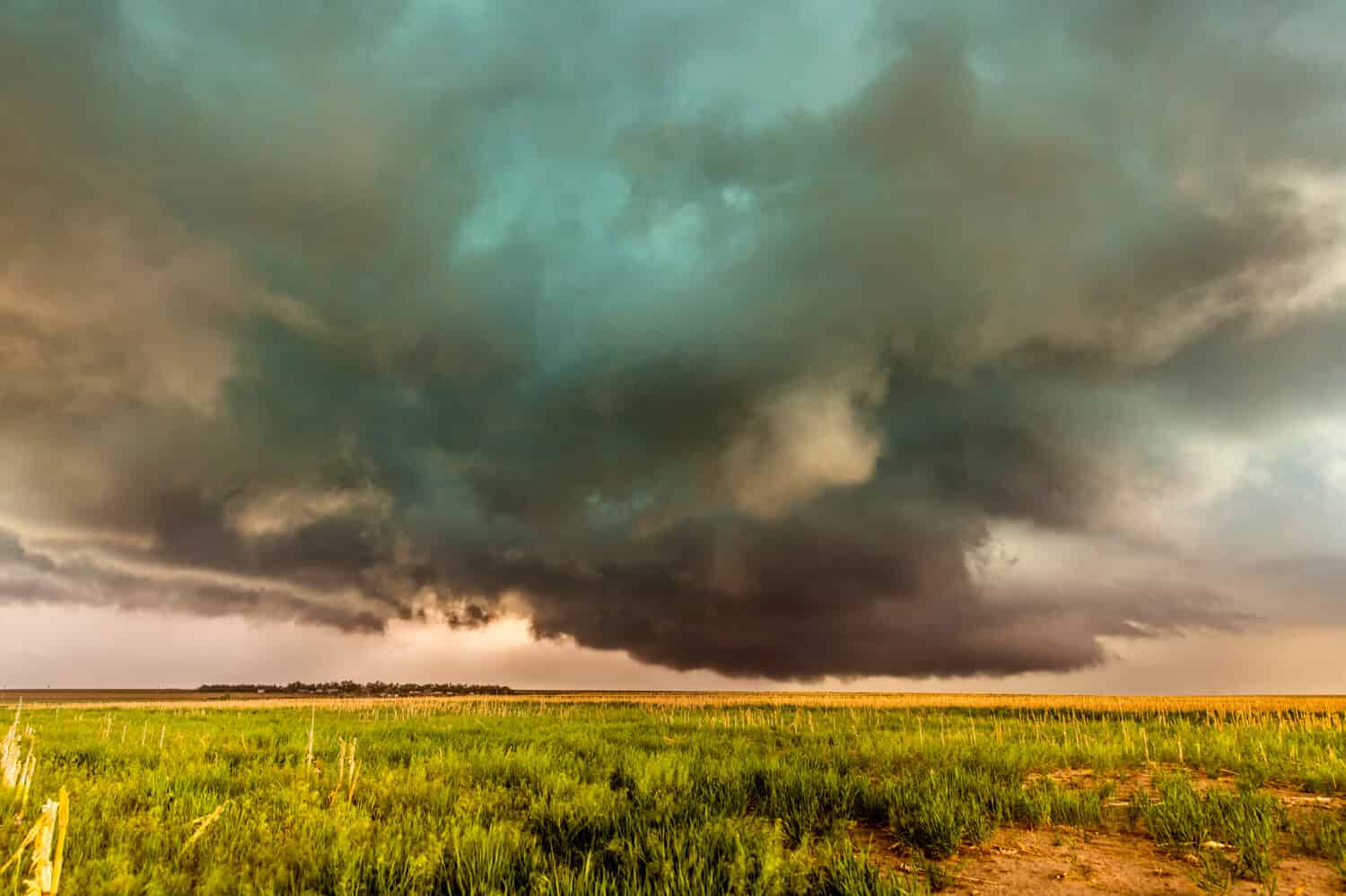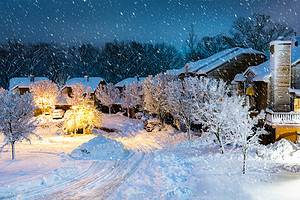Green skies have long captured the curiosity and fascination of weather enthusiasts and storm chasers. Often observed before or during severe weather events, particularly thunderstorms and tornadoes, the link between green skies and these natural phenomena remains a subject of intrigue. Not all tornadoes are accompanied by green skies and not all green skies guarantee the presence of a tornado. However, there is indeed a connection worth exploring between the two phenomena.
Reason Behind Green Skies
To put it simply, green skies occur due to the interaction of sunlight with the atmosphere during certain weather conditions. When sunlight passes through the Earth’s atmosphere, it interacts with various particles, such as molecules, water droplets, and ice crystals. These particles scatter light in different directions.
Other kinds of scattering can also be responsible, such as Rayleigh scattering. Larger particles, such as water droplets or ice crystals, closer in size to the wavelength of green light can also scatter light. These particles scatter green light more efficiently than other colors, which creates a greenish hue in the sky.
But we can sometimes observe green skies before or during severe weather events, particularly thunderstorms and tornadoes. Typically, the greenish color is associated with severe thunderstorms that have a high concentration of large hail, strong updrafts, and lots of moisture. These conditions are often found in supercell thunderstorms, which are the type of storms most likely to produce tornadoes.
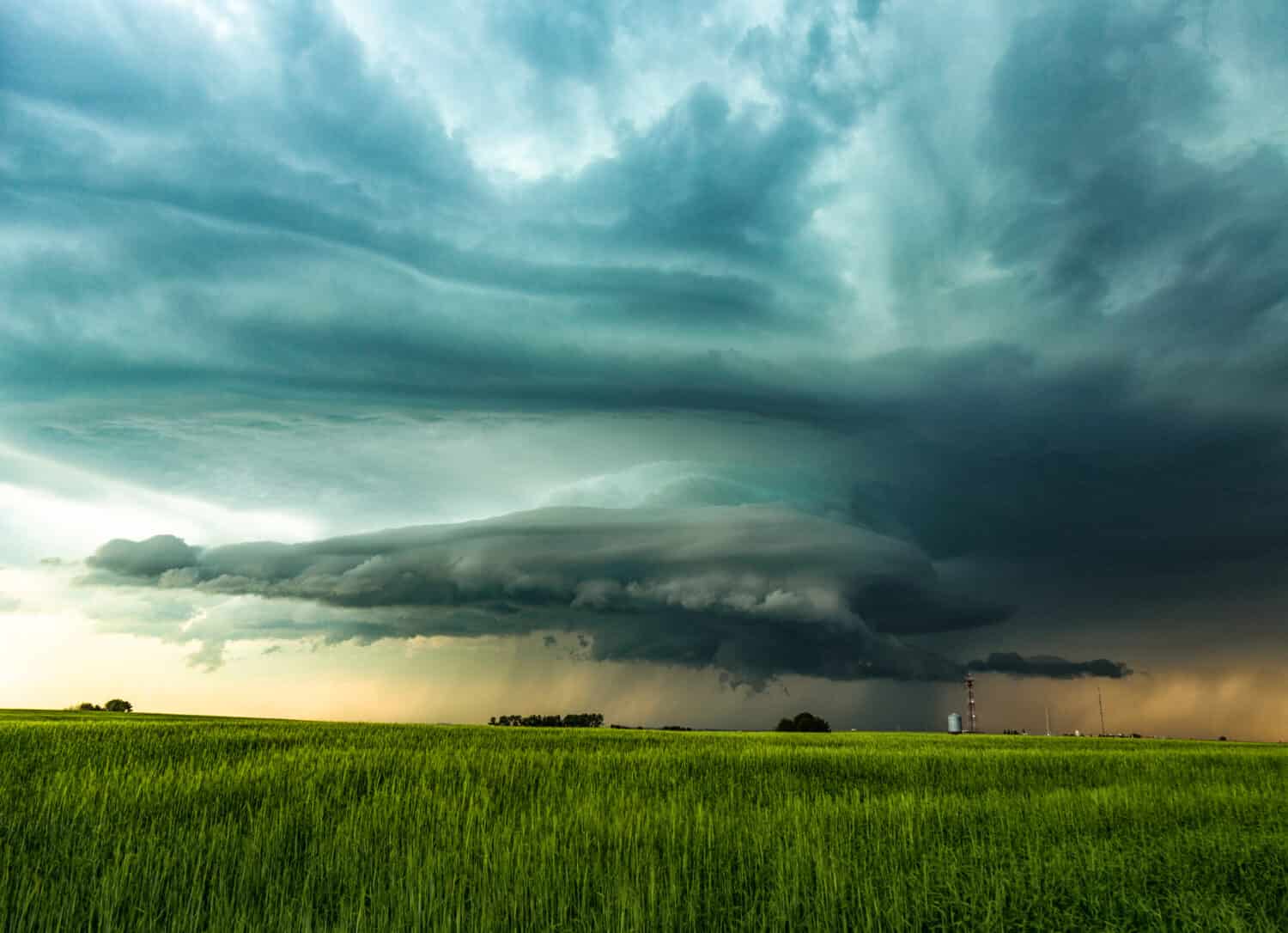
Green skies are caused by the scattering of sunlight due to large particles of water or ice crystals.
©Stuart Milliner/Shutterstock.com
The specific mechanisms that lead to the green color are not fully understood. The scattering of light by the ice particles within the storm clouds can create a filtering effect. This selectively allows green light to reach the observer’s eyes. This phenomenon is similar to how the sky appears blue during normal conditions. But in this case, the green wavelength becomes more dominant.
Tornado Formation
Tornadoes are violent, rotating columns of air that extend from big grey clouds, known as cumulonimbus clouds, to the ground. They typically form within severe thunderstorms known as supercells. These supercells possess certain atmospheric conditions which can lead to tornado development. These conditions include a strong updraft, abundant moisture, and wind shear. Wind shear signifies a change in wind direction and speed as height changes.
Supercells exhibit a distinct rotating updraft called mesocyclones within their structure. These mesocyclones are a precursor to tornado formation. It forms in the presence of wind shear which tilts the rotating updraft and creates a vertically spinning column of air. People can visually observe them as a rotating wall cloud, often associated with severe thunderstorms and tornadoes.
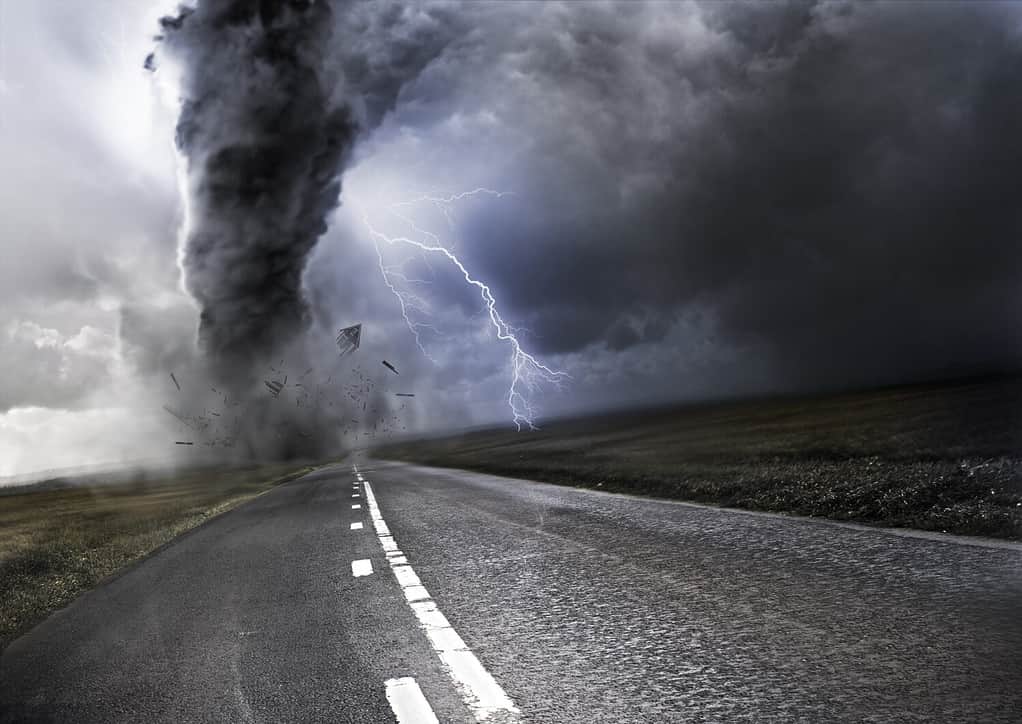
Tornadoes can form in the presence of storm clouds and bring a lot of strong winds and moisture.
©solarseven/Shutterstock.com
Connection Between Green Skies and Tornadoes
The green skies associated with severe thunderstorms and tornadoes form due to the presence of larger particles within storm clouds. These particles, such as water droplets or ice crystals, scatter green light more efficiently than other colors. This leads to the distinct greenish tint observed in the sky.
Scientists do not fully understand the exact mechanisms for the prominence of green light scattering in severe storms. However, the concentration of these larger particles contributes to the distinctive green skies often associated with impending tornadoes. This can be coupled with the unique cloud formations of supercell thunderstorms.
It is important to note that not all tornadoes are accompanied by green skies. Green skies also do not guarantee the presence of a tornado. Weather conditions can vary widely within thunderstorms, and the specific factors leading to the green coloration may not always align with tornado formation. Additionally, the intensity and shade of green can vary, ranging from a subtle tint to a more vivid color, depending on the size and concentration of the particles within the storm.
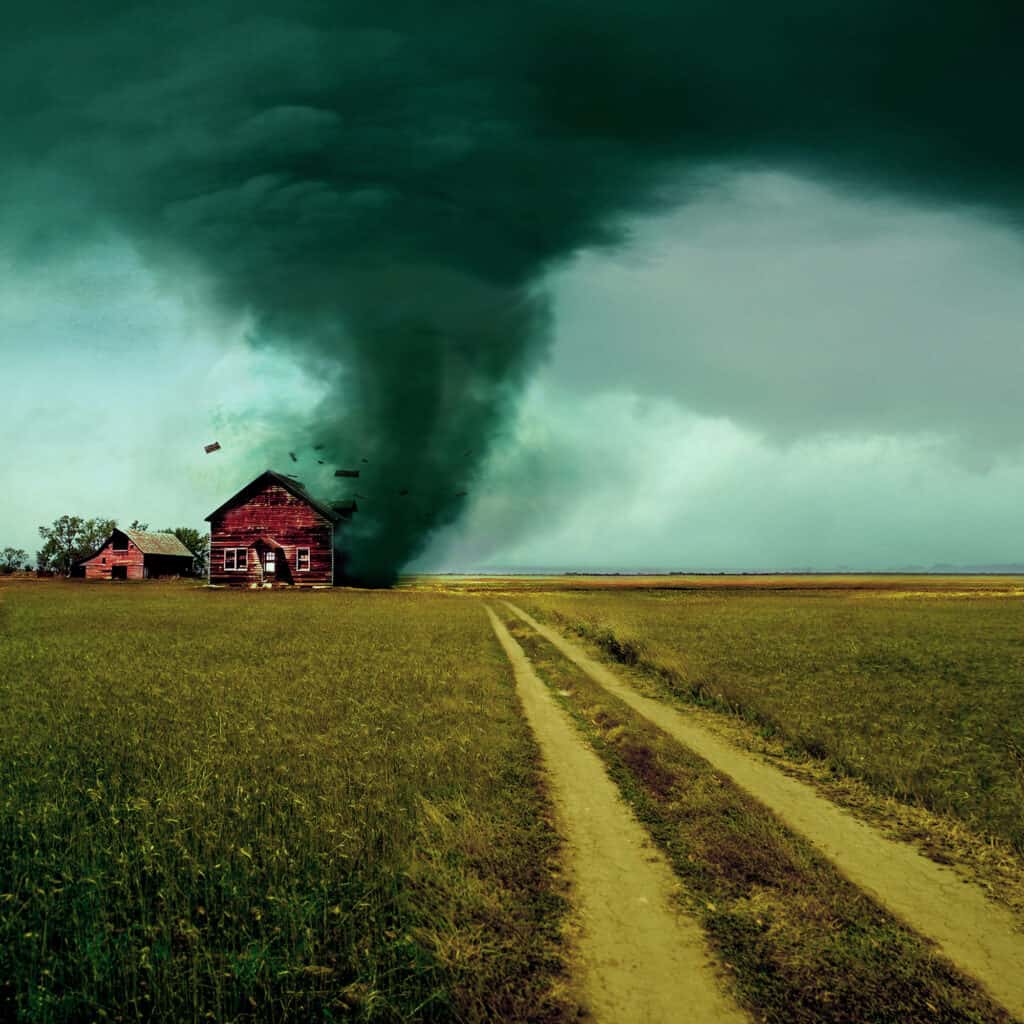
Tornadoes and green skies are related to severe thunderstorms that often create favorable conditions for both.
©EmiliaUngur/Shutterstock.com
Green Skies Don’t Always Bring Tornadoes
While green skies and tornadoes share an intriguing connection, green skies are not always a definitive predictor of tornado activity. The formation of tornadoes involves complex atmospheric conditions beyond the visual cues provided by green skies alone.
Tornadoes are violent and rapidly evolving weather phenomena that require preparedness and swift action for personal safety. When authorities issue a tornado warning or an individual observes a tornado or suspicious cloud formation, it is essential to take immediate action to protect yourself and others. Remember to seek shelter, protect yourself and your belongings, have an emergency kit in place, and create a family communication plan to always stay in touch.
Beyond that, it is important to rely on official weather reports, radar data, and expert forecasts to assess and respond to such severe weather events. Green skies are a fascinating phenomenon that add to the awe and wonder of nature’s power, but they are only one piece of the puzzle in understanding and predicting tornadoes.
Thank you for reading! Have some feedback for us? Contact the AZ Animals editorial team.

